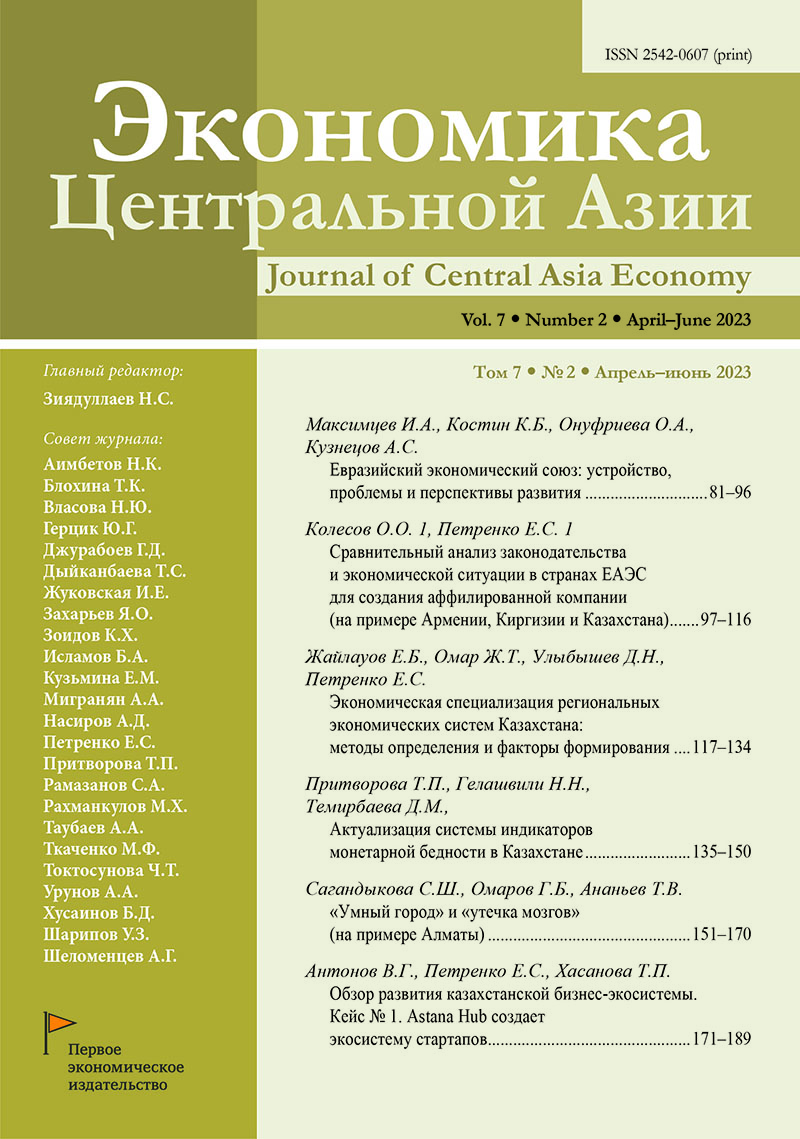Journal of Central Asia Economy
Peer-review quarterly economic journal published since 2017.
Media registration certificate: ПИ № ФС 77 - 77350 от 10.12.2019
Editor-in-Chief
- Nabi Ziyadullaev, senior researcher, Market Economy Institute of the Russian Academy of Sciences
RSCI, SCOPUS, ResearcherID, ORCID, Google Scholar, ISTINA
About
Aims & scope
Journal of Central Asia Economy is devoted to the economy of a vast region that includes Kazakhstan, Tajikistan, Uzbekistan, Turkmenistan, Kyrgyzstan and the nearby area.
Special emphasis is placed on economic, legal, social and technological issues of this region's countries economy.
The core content of the journal includes original research papers, reviews, announcements and reports on scientific and professional events and short messages.
Indexation
- Russian Science Citation Index
- Ulrich's Periodical Directory
- CrossRef
- Google Scholar
Publications
- quarterly, 4 issues per year
- in English and Russian
Current Issue
Vol 7, No 2 (2023)
Articles
Eurasian Economic Union: structure, problems and development trends
Abstract
 81-96
81-96


Comparative analysis of legislation and economic situation in the EAEU countries to create an affiliated company (on the example of Armenia, Kyrgyzstan and Kazakhstan)
Abstract
The authors of the article will conduct a comparative analysis of the legislation and the economic situation for the creation of an affiliated company in three EAEU countries, Armenia, Kyrgyzstan and Kazakhstan. The particularities of affiliation in the legislation of post-Soviet countries are considered. It is concluded that the differences in the use of this category are associated with the lack of specialized legal regulation of relations between interrelated legal entities. On the example of Armenia, Kyrgyzstan and Kazakhstan, the analysis of factors influencing the process of choosing states to create an affiliated company was carried out.
 97-116
97-116


Economic specialization of Kazakhstan's regional economic systems: definition methods and formation factors
Abstract
 117-134
117-134


Updating Kazakhstan's monetary poverty indicator system
Abstract
 135-150
135-150


The smart city and the brain drain (on the example of Almaty)
Abstract
 151-170
151-170


Overview of the development of Kazakhstan's business ecosystem. Case No. 1. Astana Hub creates an ecosystem of startups
Abstract
 171-189
171-189











